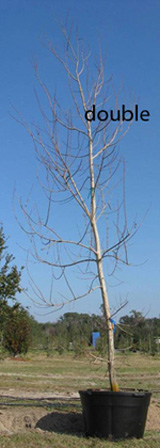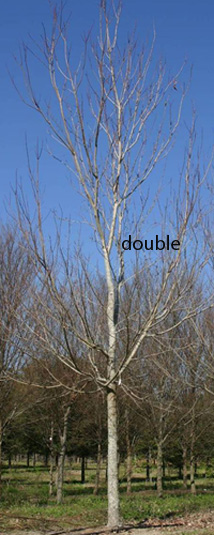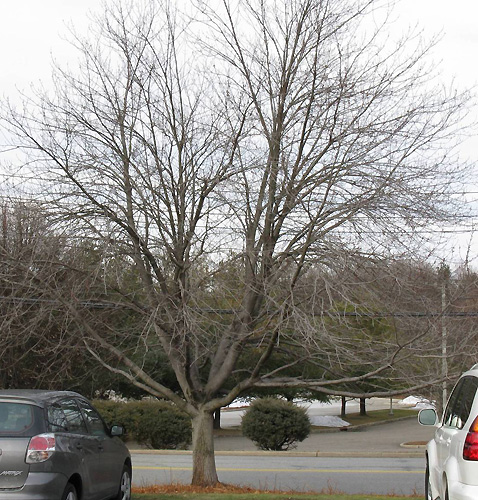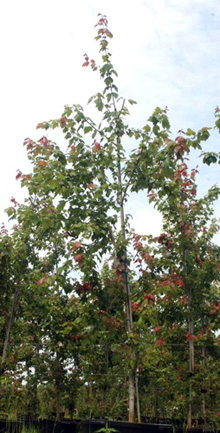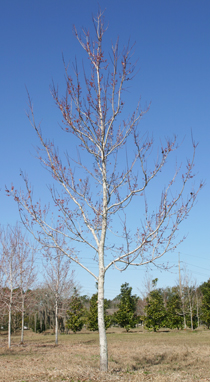Home > Pruning shade trees > Pruning at planting > Prune at planting to encourage strong structure
Prune at planting to encourage strong structure
Trees should be pruned at planting if there are correctable defects present. Defects to correct include weakly attached branches such as those with inclusions, dead or broken branches, codominant stems, and branches that are large relative to trunk diameter. Most trees benefit from structural pruning at planting. Reduce the length of or remove branches that are larger than about half the trunk diameter. Reduce the length of or remove codominant stems so that one leader is present to the top of the tree. The tree at lower left has a double leader (two codominant stems originate from the letter "d" in double) that is likely to grow into a problem if not pruned now. If not pruned it can turn into the form shown below right several years later. Form is defective due to abundance of upright branches with weak unions.
Trees do not need to be pruned at planting to balance root lose. Pruning at planting has not be shown to improve survival or growth.
The fork partially hidden by the letter "d" below remains in the same position 5 years later (right photo). Both stems grew equally tall forming a weak codominant stem defect (right photo).
|
Most of the upper canopy is growing from the weak union where both leaders join (see "double" above). These trees are weak. |
Poor form on the maple below resulted from not pruning at planting. The point where main stems join was the top of the tree at planting. This tree below could have looked like the two trees shown above when it was young.
Reduce length of branches and stems that are growing up (below left) so that only one leader remains on the maple shown below right. |
|
Before pruning
Even these small diameter stems at the very top of the treedevelop into weak codominant stems later. These should be pruned away as shown at right |
After pruning
After pruning, there is clearly one leader to the very top of the tree. This form at planting is much better prepared for the rigors of the urban environment. |
Despite the extremely dominant leader to the top of the crown, the upright stem in the top third of the crown in the upper right should be severely reduced (by removing 75% or more of the buds) or removed entirely back to the trunk at planting. |
|

